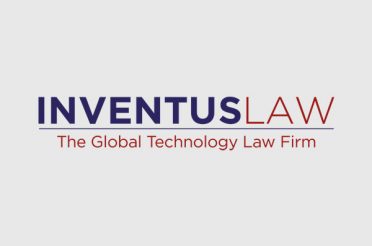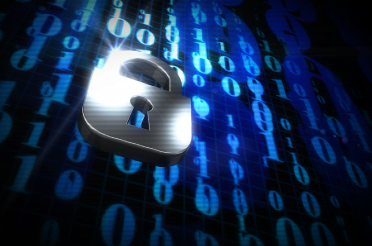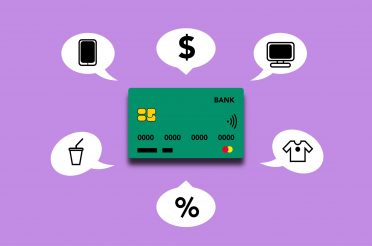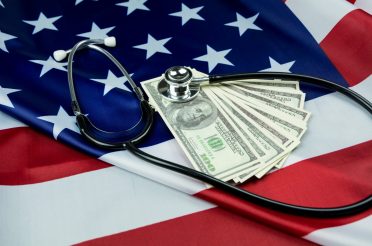IMPACT OF CARES ACT AND FFCRA ON SMALL BUSINESSES
I. INTRODUCTION[1]
During the most recent two weeks in March 2020, Congress passed, and the President signed into law, two substantial pieces of legislation to begin to address the economic disaster brought on by the COVID-19 pandemic.
The Families First Coronavirus Response Act (FFCRA) became law on March 18, 2020, and will become effective on April 1. 2020. The Coronavirus Aid, Relief, and Economic Safety (CARES) Act (found here) became law on March 27, 2020, and effective retroactively from January 27, 2020. Both of the Acts significantly help small businesses (under 500 employees) to cope with the loss of business and employees, who must take leave and/or work from home as a result of various state requirements, including the State of California, and to care for children whose schools and daycare centers have been closed.
This memo summarizes the key aspects of both the CARES Act and the FFCRA as they apply to the small companies, and also includes a brief description about the renters’ protection provisions.
II. SBA DISASTER LOAN ASSISTANCE FOR SMALL COMPANIES UNDER THE CARES ACT
The CARES Act significantly expands unemployment benefits and was passed shortly after 3.3 million Americans applied for unemployment benefits in the previous week, which was the largest unemployment claims since the Big Depression of the 1930s. The most significant provision for startups is a small business lending facility with substantial resources to provide small businesses relatively fast access to capital.
The CARES Act made several changes to the Economic Injury Disaster Loan (EIDL) Program under Section 7(b) of the Small Business Act (SBA) as modified by the CARES Act:
A. SBA EIDL ASSISTANCE AND CARES ACT
- Availability. The EIDL assistance is available to “small business concerns” (see below) in a declared disaster area. The President has declared all 50 states, Puerto Rico, Guam and the North Mariana Islands to be disaster areas for purposes of the EIDL Program. This declaration is effective retroactively from January 31, 2020, to cover economic injury, including loss of revenues, resulting from the pandemic disaster. The EIDLs will be processed directly through the SBA, although the SBA may determine to enlist the assistance of lenders for the processing and making of loans. An Economic Injury Disaster Loan assistance declaration issued by the Small Business Administration makes loans available to small businesses and private, non-profit organizations in designated areas of a state or territory to help alleviate economic injury caused by the Coronavirus.
- Cooperation with the States. Additionally, the Small Business Administration’s Office of Disaster Assistance will coordinate with the governor in the impacted state to submit the request for Economic Injury Disaster Loan assistance. Once a declaration is made for designated areas within a state, the information on the application process for EIDL assistance will be made available to all affected communities. Virtually all states, including the State of California and Delaware have issued these Disaster Declaration. The Disaster Declaration for the State of California can be downloaded here and the State of Delaware can be downloaded here.
- Loan Requirements. The EIDL Loans are available in a maximum amount of $2 million, carry an interest rate of 3.75 percent and have a maximum term of 30 years. EIDL Loans over $200,000 must be guaranteed by any owner having a 20 percent or greater interest in the applicant. The CARES Act significantly removed the requirement for personal guarantees on loans under $200,000. The CARES Act also removed certain SBA requirements that the borrower not be able to secure credit elsewhere. It also revised the requirement that the borrower have been in business for at least one year provided it was in operation on January 31, 2020.
- Emergency EIDL Advance. Section 1110 of the CARES Act allows small business borrowers to request an expedited disbursement that is to be paid within three days of the request. The Emergency EIDL Advance may not exceed $10,000 and must be used for authorized costs (i.e., COVID-19 related) but is otherwise not repayable if the EIDL is not approved. Such Emergency EIDL Advance is part of the “Emergency EIDL Grant”[2] of $10,000,000,000 provided under Section 1110 of the CARES Act.
- Use of the Proceeds of the Loans. These Loans may be used to pay fixed debts, payroll, accounts payable, mortgage, and other bills that can’t be paid because of the disaster’s impact bills that can’t be paid because of the pandemic disaster’s impact.
- Maximum Interest rates for EIDLs. The maximum interest rate is 3.75% for small businesses and 2.75% for non-profits.
- Repayment Terms. SBA offers loans with long-term repayments in order to keep payments affordable, up to a maximum of 30 years. Terms are determined on a case-by-case basis, based upon each borrower’s ability to repay. Under certain circumstances described below, the Government may forgive the loans.
- New Rules and Regulations. Currently, the SBA is working on updating their system to implement this provision so small businesses can request an EIDL Advance when they apply for the loan. In the meantime, smallbusinesses can still apply for a full EIDL assistance, but they will need to reapply for the EIDL Advance when the SBA’s system is updated with a streamlined application.
B. PAYCHECK PROTECTION PROGRAM (SECTION 1102 OF THE CARES ACT)
The CARES Act has authorized $349 billion for the Paycheck Protection Program, the details of which are provided below:
- Qualifications. In addition to the EIDL Program, a company may use the Paycheck Protection Program during the covered period from February 15, 2020 to June 30, 2020. To qualify under the Paycheck Protection Program, the company must, inter alia, “not have more than 500 employees”[3], or the maximum specified otherwise by the SBA and has received financing from a Small Business Investment Corporation.
- Maximum Interest Rate. The maximum interest rate of 4 percent per annum. Loans will be made by SBA-approved lenders that have delegated authority to make the loans without approval from the SBA (no SBA Authorization required for each individual loan).
- Expedition. This should help expedite the application and closing process. In reviewing the application, a lender has to evaluate whether the borrower was in business on February 15, 2020 and had employees and paid salaries and taxes or had independent contractors and filed 1099-MISC for them.
- Allowable Uses of the Loan: Such loan proceeds can be used for payroll costs, employee salaries, commissions, or similar compensations, rent, utilities, costs related to the continuation of group health care benefits during periods of paid sick, medical, or family leave, and insurance premiums; and interest on any other debt obligations that were incurred before the covered period.
- Favorable Provisions. The CARES Act requires all guarantee fees be waived and that loans under this Program be non-recourse to the borrower. The CARES Act specifically provides that each loan under this Program is nonrecourse to the shareholders, members and partners of the borrower. The CARES Act removes the no “credit elsewhere test” for these loans, which was applicable to previous loans from the SBA. The loans will not require collateral. The loans may be prepaid at any time without prepayment penalties. Payments on the loan will be deferred for six to twelve months. Such waivers have essentially loosened the requirements to obtain a loan for small companies.
- Maximum Loan Amount: The maximum loan amount would be the lesser of $10 million or a sum of company’s average total monthly payroll cost for the previous year[4] multiplied by 2.5 and the outstanding amount of a loan under subsection (b)(2) of the SBA that was made during the period beginning on January 31, 2020 and ending on the date on which covered loans are made available to be refinanced under the covered loan. If a firm wasn’t in business in early 2019, the cost would be calculated based on payroll from January 1, 2020 to February 29, 2020.
- Sole Proprietorship and Self-employed Individuals. Significantly, sole proprietorships, independent contractors and self-employed individuals (as defined under the FFCRA) qualify under this Paycheck Protection Program. Additionally, the CARES Act makes certain nonprofit organizations (must be tax-exempt under Section 501(c)(3) of the Internal Revenue Code), qualified veterans’ organizations and certain Tribal business concerns eligible.
- Certifications. To participate in the Paycheck Protection Program, the borrower must certify that (i) current uncertain economic times make the loan request necessary to support ongoing operations; (ii) funds will be used to keep workers employed and make payroll, mortgage payments, lease payments and utility payments; (iii) borrower does not already have an application pending for other payroll assistance under the CARES Act; and (iv) during the period beginning on February 15, 2020 and ending on December 31, 2020, that the eligible borrower has not received amounts under this Program for the same purpose and duplicative of amounts applied for or received under a covered loan. A loan under the Paycheck Protection Program makes the borrower ineligible for the Employee Retention Tax Credit made available under Section 2301 of the CARES Act but such disqualification does not apply to any credits available under the FFCRA (such as the paid sick leave tax credit) or other credits available under the CARES Act.
C. LOAN FORGIVENESS (SECTION 1106 OF THE CARES ACT)
- Loan Forgiveness. Under Section 1106 of the CARES Act, small business loan borrowers will be eligible for loan forgiveness, for both new loans under the Paycheck Protection Program and for existing Section 7(a) loans. For borrowers under the Paycheck Protection Program, the loan forgiveness will equal the amount spent by the borrower in the eight-week period after the loan origination date on the following items (not to exceed the original principal amount of the loan): (i) payroll costs (not to exceed $100,000 of annualized compensation per employee); (ii) payments of interest on any mortgage loan incurred prior to February 15, 2020; (iii) payment of rent on any lease in force prior to February 15, 2020; and (iv) payment on any utility for which service began before February 15, 2020. This Section also states that the amount forgiven is not considered taxable income to the borrower.
- Pro-rata Reductions for Employee Layoffs and Pay Cuts. To incentivize the borrower to keep employees, the amount forgiven will be reduced proportionally by any reduction in the number of employees retained as compared to the prior year. The proportional reduction in loan forgiveness also applies to reductions in the pay of any employee where the pay reduction exceeds 25 percent of the employee’s prior year compensation. A borrower will not be penalized by a reduction in the amount forgiven for termination of an employee made between February 15, 2020 and April 26, 2020, as long as the employee is rehired by June 30, 2020. Any amount outstanding after considering the amount forgiven will be repayable over a term not to exceed 10 years.
C. ADDITIONAL PROVISIONS FOR SMALL BUSINESSES
- SBA Loan Program. The CARES Act “temporarily” modifies the Small Business Administration’s 7(a) loan program to allow companies with less than 500 employees, as well as those that are larger than 500, but qualify as a “small business concern” to apply for a loan. For businesses with existing SBA loans, principal and interest would be waived for six months.
- Business Interruption Loan. Businesses with 500 or fewer employees that continue to employ and pay workers through the coronavirus crisis may qualify for small business interruption loan. The government would provide loans to small and midsize businesses to prevent layoffs and to continue paying employees. Individual loans could cover six weeks of payroll, capped at $1,540 per week, per employee.
- Maximum Loan Amount. The maximum loan amount would be the lesser of $10 million or a company’s average total monthly payroll cost for the previous year multiplied by 2.5. If a firm wasn’t in business in early 2019, the cost would be calculated based on payroll from January 1 to February 29, 2020. The loans would be available during an emergency period ending June 30th.
- Verification. Applicants must verify the previous six weeks of payroll and later verify that they have paid employees for eight weeks after receiving the loan.
- Process. The plan would rely on banks to facilitate the distribution of funding through the Small Business Association, as well as establish a new government lending agency. Additionally, the Federal Reserve has announced plans to create a Main Street Business Lending Program to complement the SBA in lending to small and medium businesse.
- Eligibility Considerations. Loan can be used for the same expenses as the above expenses. The only consideration for eligibility appears to be whether the firm was in operation before March 1, 2020 and had employees. Small businesses, private non-profit organizations of any size, small agricultural cooperatives and small aquaculture enterprises that have been financially impacted as a direct result of the Coronavirus since Jan. 31 may qualify for Economic Injury Disaster Loans of up to $2 million to help meet financial obligations and operating expenses which could have been met had the disaster not occurred. To qualify for the loans, you may be prevented from cutting salaries and wages across the board. At one time this was proposed but we are not sure if it will be in the legislation that becomes law.
E. HOW TO APPLY FOR THE SBA DISASTER ASSISTANCE LOAN
Step 1: Apply for a Loan
- Online. Apply online at the SBA’s secure website disasterloan.sba.gov/ela.
- In-Person: at a disaster center; or
- By mail.
As a business of any size, you may borrow up to $2 million for physical damage.
As a small business, small agricultural cooperative, small business engaged in aquaculture, or private non-profit organization you may borrow up to $2 million for Economic Injury.
As a small business, you may apply for a maximum business loan (physical and EIDL) of $2 million.
Step 2: Property Verified and Loan Processing Decision Made
SBA reviews your credit before conducting an inspection to verify your losses.
An SBA verifier will estimate the total physical loss to your disaster damaged property.
A loan officer will determine your eligibility during processing, after reviewing any insurance or other recoveries. SBA can make a loan while your insurance recovery is pending.
A loan officer works with you to provide all the necessary information needed to reach a loan determination. Their goal is to arrive at a decision on your application within 2 – 3 weeks. (At present, because of high traffic it may take more time)
A loan officer will contact you to discuss the loan recommendation and your next steps. You will also be advised in writing of all loan decisions.
Step 3: Loan Closed and Funds Disbursed
SBA will prepare and send your Loan Closing Documents to you for your signature.
Once they receive your signed Loan Closing Documents, an initial disbursement will be made to you within 5 days:
Physical damage: $25,000; Economic injury (working capital): $25,000 (In addition to the Physical damage disbursement).
A case manager will be assigned to work with you to help you meet all loan conditions. They will also schedule subsequent disbursements until you receive the full loan amount.
FOR COMPLETE ASSISTANCE, PLEASE VISIT, https://www.sba.gov/funding-programs/disaster-assistance, you will find a red button in the bottom of that page which will help you verify if you qualify as a small business and navigate you through the loan process.
F. PAYROLL TAX DEFERRALS AND REFUNDS FOR ELIGIBLE EMPLOYERS
- Employer payroll taxes (Section 2302 of the CARES Act). The CARES Act has deferred the payment of certain employer payroll taxes like social security tax for 2020. Such taxes will be paid in two equal installments – first installment will be due on December 31, 2021, and the second on December 31, 2022. Employers who have received a loan forgiveness under Sections 1106 and 1109, may not qualify for this deferral benefit.
- Refundable employee retention credit. Section 2301 of the CARES Act provides for a refundable payroll tax credit for 50 percent of “qualified wages” paid by employers to employees during the COVID-19 crisis. Such credit can be availed by the employers whose (1) operations were fully or partially suspended, due to a COVID-19-related shutdown order, or (2) gross receipts declined by more than 50 percent when compared to the same quarter in 2019. The “qualified wages” is calculated on the basis of the number of employees as determined by taking the average number of employees in 2019 and is subject to a $10,000 limit per eligible employee, including health benefits.
- Individual Rebates. The CARES Act also provides for certain rebates for married couples ($2,400) and unmarried individuals ($1,200), as well as an additional $500 per child. The benefit applies to people whose incomes comes from non-taxable means-tested benefit programs like SSI benefits. The IRS will use taxpayers’ 2019 filed tax return to provide the rebate or the 2018 return in the alternative. Thus, taxpayers are not required to fulfill any documentary formalities for the rebate.
- Further Details. For further details, refer to Section 2201 of the CARES Act.
III. PAID SICK LEAVE FOR SMALL COMPANIES UNDER THE FFCRA
A. Paid Leave.
- FFCRA Provisions. Among other fiscal packages, the FFCRA does three things: (1) expands the Family and Medical Leave Act (FMLA) temporarily (until the end of December 2020) to cover leave needed for the care of children out of school because of COVID-19 and also makes weeks 3 through 12 of its effective period paid leave; (2) creates 2 weeks of paid sick leave for childcare and other leave related to the coronavirus; and (3) provides for tax credits related to the paid leave provisions created by the act. The FMLA amendments and the new federal sick leave were created in separate and distinct sections. In many respects, they will operate independently, but they were also clearly meant to align with one another, as they have many commonalities.
- DOT, DOL AND IRS Rules. The Department of Treasury (DOT), Internal Revenue Service (IRS), and Department of Labor (DOL) announced plans to provide some relief for small and midsize employers under the FFCRA. In their announcement, they stated that employers may make immediate use of their tax deposits to pay employees taking emergency leave under the Emergency Family and Medical Leave Act (E-FMLA) or as Emergency Paid Sick Leave Act (E-PSLA). The DOL further announced that it would not bring any enforcement actions against employers for any violations within the first 30 days the law is in effect, provided the employer can show it is acting in good faith to comply with the new law.
B. EMPLOYEES ELIGIBLE FOR SICK LEAVE
- Eligible Employees. Employees (full-time or part-time) become eligible for this benefit on hire. An employer might be able to require an employee to telework (paying the employee at the full rate then).
- Healthcare Providers. Healthcare providers and first responders can exclude some or all of their employees.
- Other Employees. Other “essential” employers (such as grocers and gas stations) are not exempt.
- 50 or Less Employees. Employers with fewer than fifty (50) employees who can demonstrate providing this leave would “jeopardize the viability of the business as a going concern” are also exempt from providing this leave. The Department of Labor is expected to issue emergency regulations describing the metrics for jeopardy.
C. COVID – 19 SICK LEAVE TRIGGERS
Paid sick leave is to be available to an employee when such employee cannot even work remotely because:
- the employee is subject to a Federal, State, or local quarantine or isolation order related to COVID–19.
- the employee has been advised by a health care provider to self-quarantine due to concerns related to COVID–19.
- the employee is experiencing symptoms of COVID–19 and seeking a medical diagnosis.
- the employee is caring for an individual who is subject to an order described in (1) above or has been advised described in (2) above.
- the employee is caring for a son or daughter of such employee if the school or place of care of the son or daughter has been closed, or the childcare provider of such son or daughter is unavailable, due to COVID–19 precautions.
- the employee is experiencing any other substantially similar condition specified by the Secretary of Health and Human Services in consultation with the Secretary of the Treasury and the Secretary of Labor.
Note the rules are quite complex. For example, for (3) above, this means paid sick leave can be taken in less than full-day increments. The inclusion of (5) above mirrors the paid childcare leave provision, but available immediately. This allows employees with children to be eligible for both forms of leave and able to take them consecutively.
D. LENGTH OF PAID LEAVE
Paid leave can be taken in increments. After the first use of leave under this law, the employee is expected to give the employer reasonable notice of further use. This paid leave can be used before other leave if the employee desires. An employer cannot require the employer to use vacation, sick or other paid leave benefit before using this benefit in relation to the types of COVID-19 causes above. This leave benefit is capped at 80 hours for full time employees (less for part-time employees).
E. AMOUNT OF PAID LEAVE
The amount of paid leave for a full-time employee is based on 100% of their regular rate of pay multiplied by the number of hours regularly scheduled to work. For employees with irregular schedules the law provides a formula based on prior history or expectation at time of employment. The daily rate is capped at $511 and the total amount is capped at $5,110. However, the rate is capped at $200/day and $2,000 total, if the leave is taken due to (4)-(6) above.
F. NOTICE REQUIREMENTS
From March 25, 2020, employers are required to post a notice of these employee benefits under the FFCRA alongside the other notices that employers are required to post. The Department of Labor has issued a model notice (which can be found here), which the covered employers under the FFCRA must publish, along with the frequently asked questions regarding the notice requirements which can be found here.
G. DURATION AND FEDERAL HELP
This leave is capped at 2 weeks total and only applies to qualifying leave during the period to and including December 31, 2020. The law has a reinstatement provision for returning leave-takers. Amounts paid as leave can be applied as a credit against federal tax payments, with any excess credit refunded as overpayment of tax.
IV. RENTER PROTECTION PROVISIONS
A. RENTER PROTECTIONS.
Lastly, the CARES Act provides for the following protections for the existing renters[5]:
- Protection During Forbearance Period (Section 4023). During the forbearance period (as defined in the CARES Act), if a “multifamily borrower” with a federally backed multifamily mortgage loan is granted forbearance of residential mortgage loan payments due to the hardships faced pursuant to COVID-19 emergency, such borrower may not:
- initiate a legal action to recover possession of the dwelling unit located on the “applicable property”[6] from the tenant for nonpayment of rent or other fees or charges; or
- charge fees, penalties, or other charges to the tenant related to such nonpayment of rent.
- Notice to Vacate. Additionally, such borrower may not issue a notice to vacate until the expiration of the 120-day period and may not require the tenant to vacate until the expiration of 30 days from the date of serving the notice to vacate. In simple terms, a lessor may not require a tenant to vacate the covered dwelling for a period of 150 days from the date of enactment of the CARES Act. For the defined terms refer to the CARES Act here.
B. Temporary Ban on Eviction Filings
- Legal Actions. Even if forbearance is not sought (as discussed below), for a period of 120-days from the date of enactment of the CARES Act, a landlord of a “covered dwelling”[7] with a federally backed mortgage loan may not (i) initiate a legal action to recover possession of the covered dwelling from the tenant for nonpayment of rent or other fees or charges; or charge fees, penalties, or (ii) other charges to the tenant related to such nonpayment of rent.
- Notice of Eviction. Additionally, a lessor of a covered dwelling may not issue a notice to vacate until the expiration of the 120-day period and may not require the tenant to vacate until the expiration of 30 days from the date of serving the notice to vacate. It is important to understand the meaning of the term “covered dwelling” to take benefit under this provision. Refer to CARES Act Section 4024 which can be found here.
Disclaimers:
This Memo is being provided for information purposes only. Information contained on or made available herein is not intended to and does not constitute legal advice, recommendations, mediation or counseling under any circumstance. This information and your use thereof do not create an attorney-client relationship. You should not act or rely on any information provided herein without seeking the advice of a competent attorney licensed to practice in your jurisdiction for your particular business. The rules and regulations are still being written and may affect the requirements, approvals, qualifications, and disbursement for the Programs described herein. The SBA has up to 30 days following the enactment of the CARES Act to issue regulations implementing and providing guidance under certain provisions of the CARES Act. The Treasury Department and Internal Revenue Service are required to issue regulations implementing and providing guidance under certain provisions of the CARES Act.
[1] If you have any questions about this Memo or about the FFCRA or CARES, please email Christopher L. Rasmussen, Managing Partner Commercial, Trademark and Privacy at chris@inventuslaw.com or Anil Advani, Managing Partner at anil@inventuslaw.com.
[2] Emergency EIDL Grants are available from January 31, 2020 and ending on December 31, 2020.
[3] The definition of an “affiliate”, (determined by the SBA in accordance with 13 CFR § 121.103), as it applies to startups is currently under review.
[4] “In the case of an applicant that is seasonal employer, as determined by the Administrator, the average total monthly payments for payroll shall be for the 12-week period beginning February 15, 2019, or at the election of the eligible recipient, March 1, 2019, and ending June 30, 2019.”
[5] Covered period for renters’ protections is sooner of December 31, 2020 or the termination of the COVID-19.
[6] An “applicable property” with respect to a Federally backed multifamily mortgage loan, means the residential multifamily property against which the mortgage loan is secured by a lien.
[7] A Covered Dwelling means a dwelling that is occupied by a tenant—
(i) pursuant to a residential lease; or
(ii) without a lease or with a lease terminable under State law; and
(B) is on or in a “covered property” (as defined under the CARES Act). Please refer to the CARES ACT here to understand the meaning of the terms “covered dwelling”; “dwelling”; “covered property”; “federally backed mortgage loan”; and “federally backed multifamily mortgage loan.”





